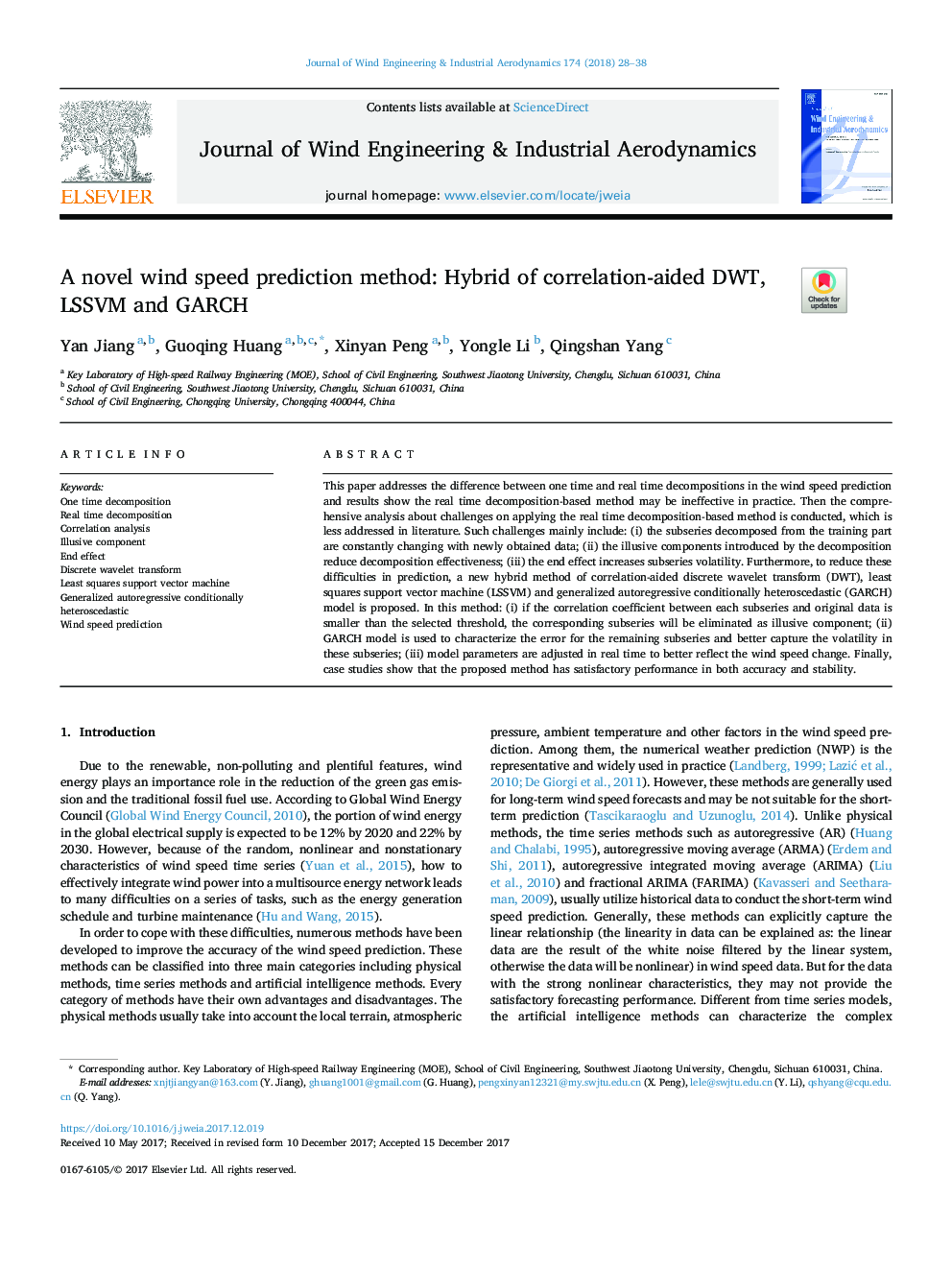| Article ID | Journal | Published Year | Pages | File Type |
|---|---|---|---|---|
| 6757035 | Journal of Wind Engineering and Industrial Aerodynamics | 2018 | 11 Pages |
Abstract
This paper addresses the difference between one time and real time decompositions in the wind speed prediction and results show the real time decomposition-based method may be ineffective in practice. Then the comprehensive analysis about challenges on applying the real time decomposition-based method is conducted, which is less addressed in literature. Such challenges mainly include: (i) the subseries decomposed from the training part are constantly changing with newly obtained data; (ii) the illusive components introduced by the decomposition reduce decomposition effectiveness; (iii) the end effect increases subseries volatility. Furthermore, to reduce these difficulties in prediction, a new hybrid method of correlation-aided discrete wavelet transform (DWT), least squares support vector machine (LSSVM) and generalized autoregressive conditionally heteroscedastic (GARCH) model is proposed. In this method: (i) if the correlation coefficient between each subseries and original data is smaller than the selected threshold, the corresponding subseries will be eliminated as illusive component; (ii) GARCH model is used to characterize the error for the remaining subseries and better capture the volatility in these subseries; (iii) model parameters are adjusted in real time to better reflect the wind speed change. Finally, case studies show that the proposed method has satisfactory performance in both accuracy and stability.
Keywords
Related Topics
Physical Sciences and Engineering
Energy
Renewable Energy, Sustainability and the Environment
Authors
Yan Jiang, Guoqing Huang, Xinyan Peng, Yongle Li, Qingshan Yang,
